
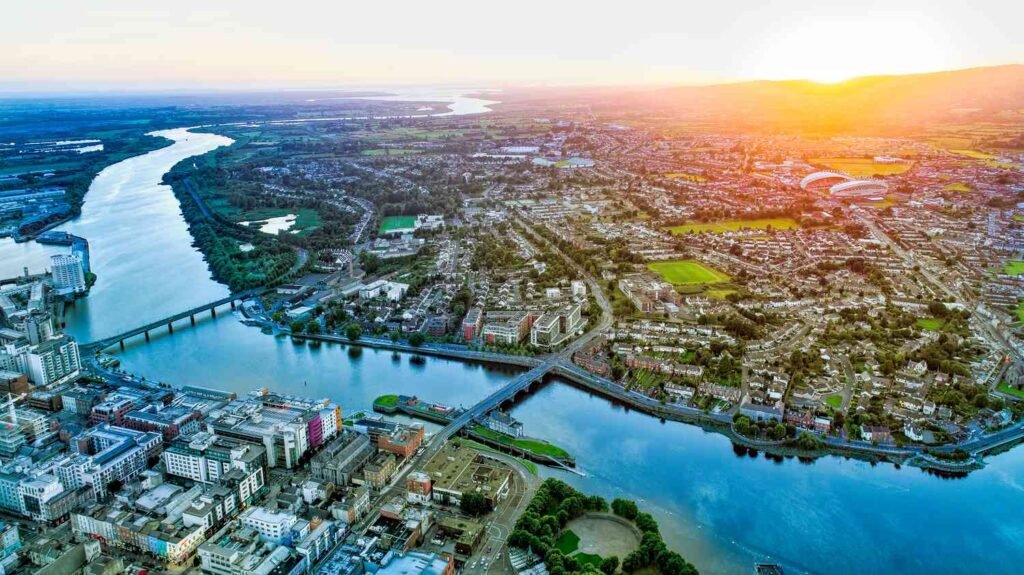
Limerick and its colorful and fascinating history are visible everywhere and proudly cherished. From the time it was developed by the Vikings over a thousand years ago to the present day, Limerick has been the largest seaport in western Ireland. Its magnificent river, the majestic Shannon, forms part of one of the oldest trails in Ireland. The city boasts its university, museums, citadel and cathedral, which is undoubtedly a metropolis. All traces of the Vikings disappeared until archaeologists uncovered the foundations of their dwellings and collected some of their household goods. More tangible remains of former inhabitants date back 800 years to the construction of King John’s Castle.

Location
Limerick is a city in west-central Ireland, located on the Shannon River estuary, 195 km west of Dublin. The third most populous city in Ireland.
1. Discover King John’s Castle
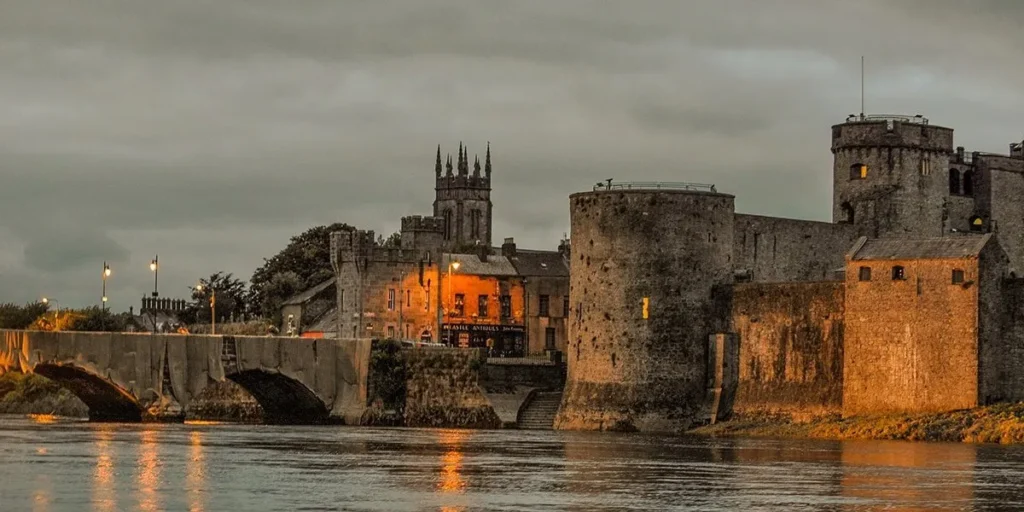
King John’s Castle dominates the Limerick city skyline. King John’s Castle is situated in the heart of Limerick’s medieval heritage district, on the River Shannon on ‘Kings Island’. The castle’s expansive interior sheds new light on its evolution since it was built by King John – a notorious villain in the Robin Hood tradition – on the site of a solid Viking settlement. Today, costumed guides, interactive touchscreen technology-based magic, and spooky 3D visitors are on hand to immerse visitors in medieval battles, losses, and triumphs.
2. Visit Bunratty Castle and Folk Park
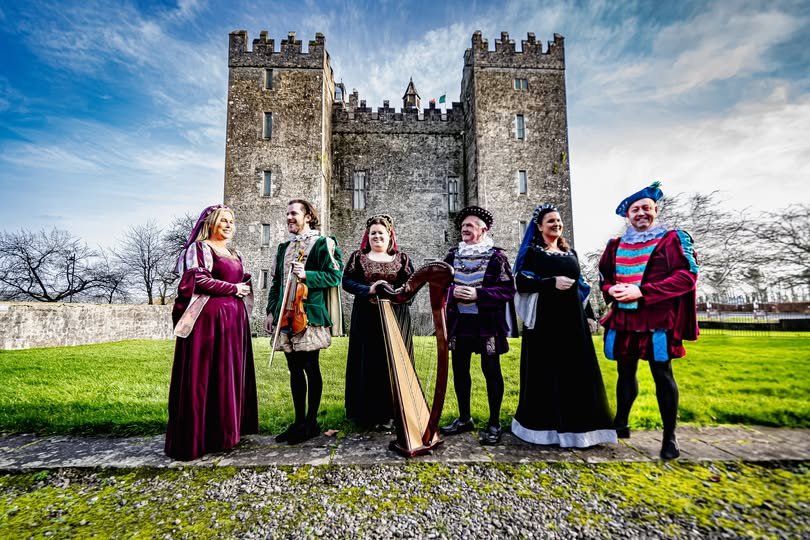
Bunratty Castle & Folk Park in Bunrattyis one of Ireland’s most iconic landmarks. From the elegance and attention to detail of the careful restoration within the castle walls, to the charm and authenticity of the village street and farmhouses, it is easy to see why visitors are so impressed by this iconic attraction.
Enjoy two unique visitor experiences at Bunratty Castle & Folk Park in Bunratty, County Clare. Visit the 15th century Bunratty Castle and stroll through the Bunratty Folk Park. The characters and musicians bring the village to life as they mimic what life would have been like in the early 1900s. The village collection of typical 19th century urban Irish buildings include the school, doctor’s house, pawnbrokers, pub, drapery, printworks, grocery, hardware shop, pottery and a post office.
3. Watch the Limerick City Gallery of Art
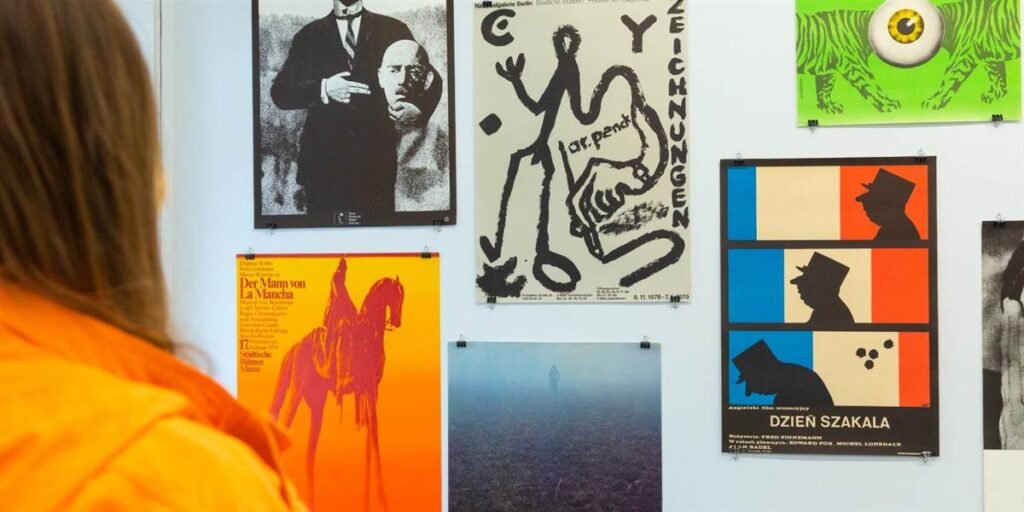
Limerick City Gallery of Art includes a stunning glass walled sculpture gallery overlooking the People’s Park. Admission is free to all areas of the this superbly curated collection of Irish and International Art and Sculpture as well as some exciting new pieces by upcoming local artists. Long with the permanent collection, Limerick City Gallery of Art regularly hosts a number of temporary exhibitions displaying the works of both national and international artists.
Some of the previous exhibitions held here include:
‘The Loneliness of Being German’ by artists Thomas Brezing and Vera Klute
‘Skin Deep’ by visual artist Mary-Ruth Walsh, exploring skin as both a substance and a metaphor.
4. Visit the Hunt Museum
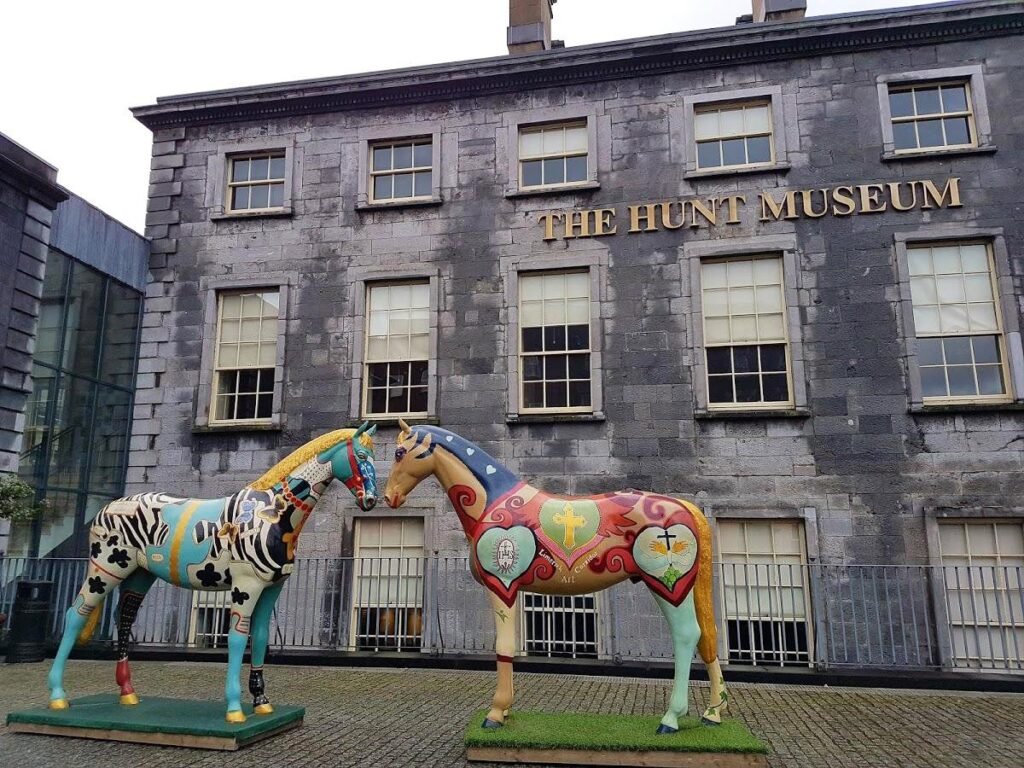
The Hunt Museum, located in Limerick, Ireland, has a rich collection of art and historical artifacts. Their mission is to increase accessibility, making museum experiences inclusive to all visitors, particularly those with disabilities.
The Seeing Without Sight project aimed to break barriers for visually impaired individuals, enabling them to engage with museum artifacts through sensory exploration. The Hunt Museum exhibits artefacts and artworks gathered over a lifetime by John and Gertrude Hunt featuring works by Picasso, Renoir and Gaugin.
5. Shop at Milk Market
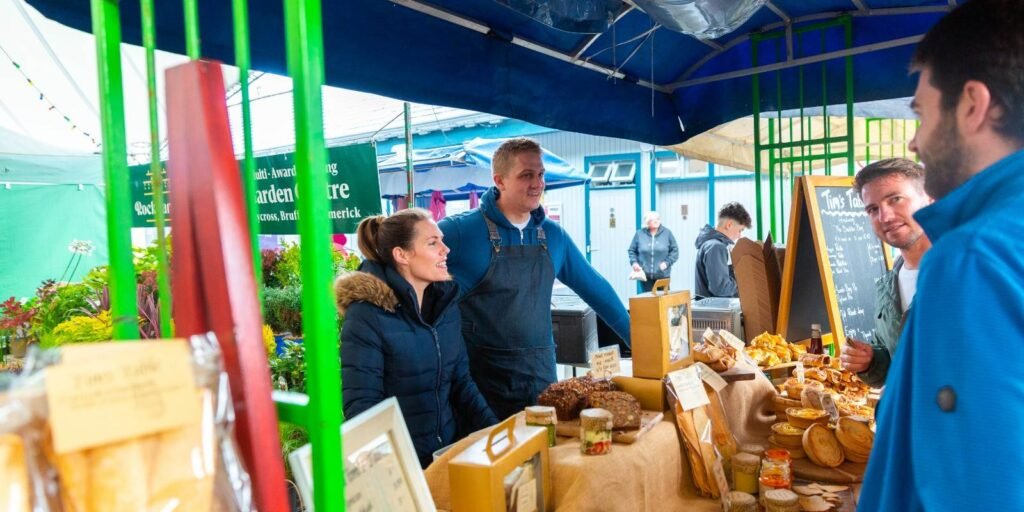
This is the largest and liveliest market in the city. There are 50 stalls and 21 permanent shops, plus a café or two. Every day of the week you can browse and shop at the stalls for vegetables and fruit, fresh fish, ready meals and artisan cheeses, as well as other local produce. However, the best day to visit is Saturday, when it is busiest and the stalls are most crowded. The market is open from 8am to 8pm on weekdays and from 8am to 6pm on Saturdays.
6. Go for a walk in People’s Park
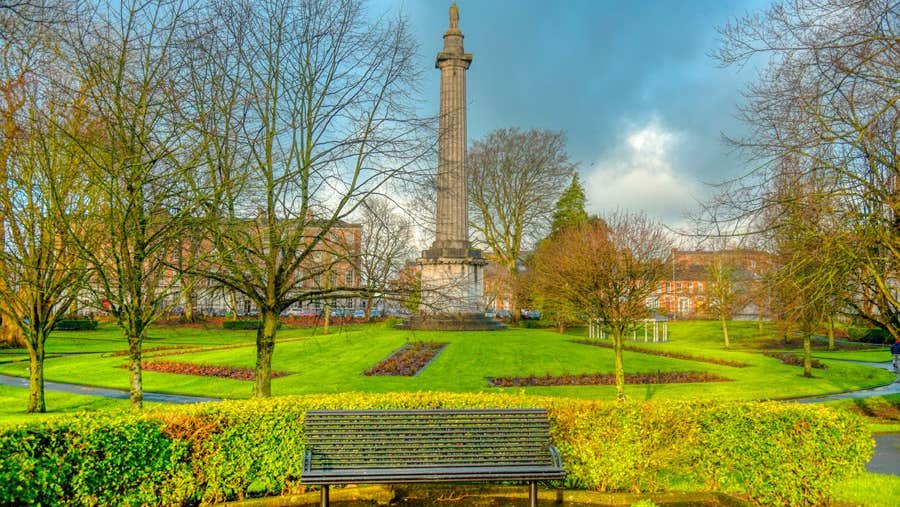
People’s Park in located in Pery Square in Limerick City. The park was dedicated to the memory of an important businessman, Richard Russell and now contains the Limerick City Art Gallery. The tall limestone column found in the People’s Park was built in 1829. It has a statue of Thomas Spring Rice on top of it. Rice was a popular political figure in the city, and still alive when the column was erected.
The People’s Park is a beautiful and peaceful landscaped park that is well maintained. It is certainly worth adding to your itinerary when visiting Limerick. There is a children’s playground designed for toddlers to age 10. When you walk around the park, you will see a number of sculptures, a bandstand, two gazebos providing shade to visitors, and the memorial to Rice. Some of the tree species found in the People’s Park are ash, birch, elm, lime, beech, maple, poplar, walnut, and others.
8. You can’t miss visit St Mary’s Cathedral
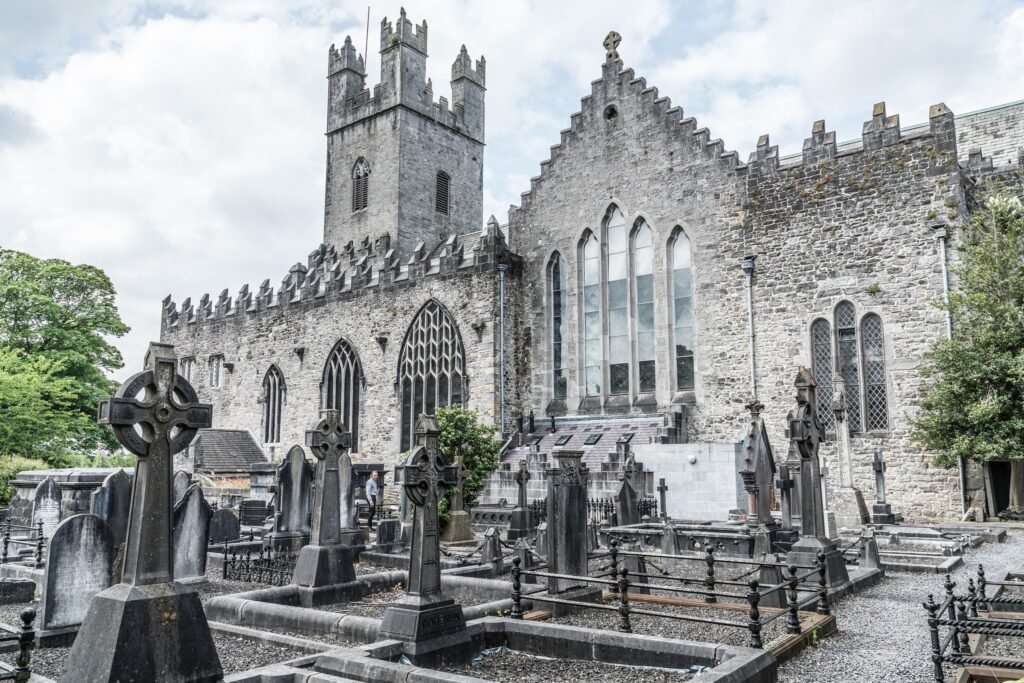
While the Cathedral is a beautiful and historic building, it is still used today for its original purpose, as a place of worship and prayer. The historic setting only adds to the wonderful atmosphere as the the people of Limerick continue to worship God today in its ancient and hollowed confines.
9. Get Limerick City Kayak Tour

Kayak Tours start off behind The Hunt Museum and will take you past many interesting sites along the River Shannon, including King John’s Castle, the Treaty Stone, St.Mary’s Cathedral, Thomond & Sarsfield Bridges and many more. Suits life jackets and helmets are all provided. Just bring along a towel, swimwear and spare clothes.
Choice of 1½ hour or 2½ hour tours available. Weekday & weekend Tours available. Start times depends on tides and weather conditions.
10. Go to one of the best restaurants in the city
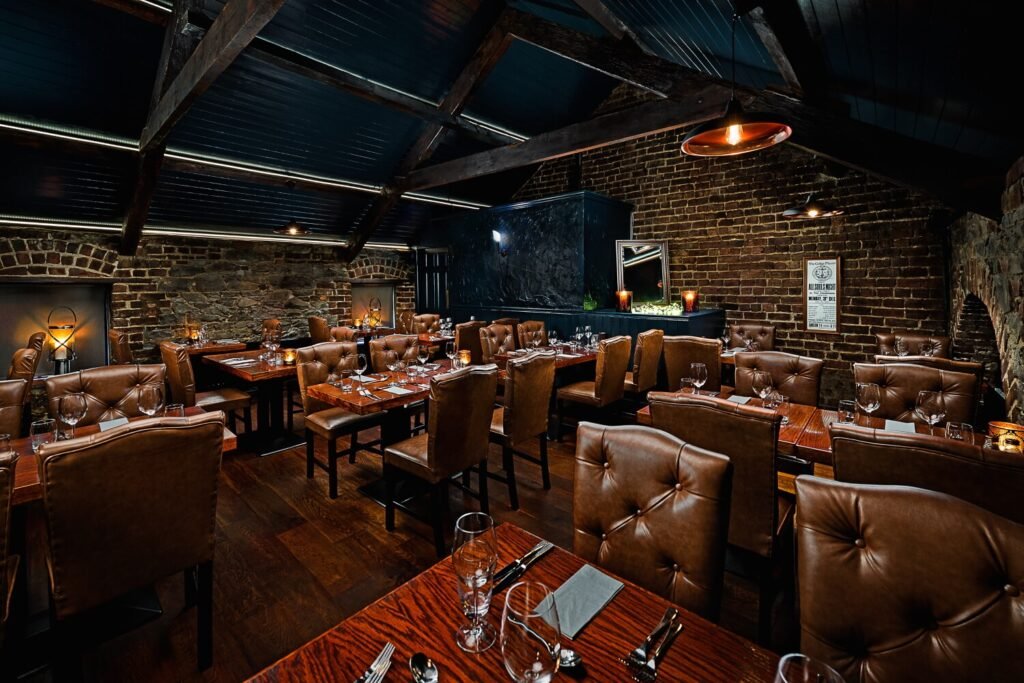
Whether you’re looking for delicious in restaurant or street food, cosy pubs with live music, your do find it what looking for.
- Freddy’s Restaurant
- The French Table Restaurant Limerick
- Texas Steakout
- The East Room Restaurant | Plassey House
- The Curragower Bar and Restaurant
